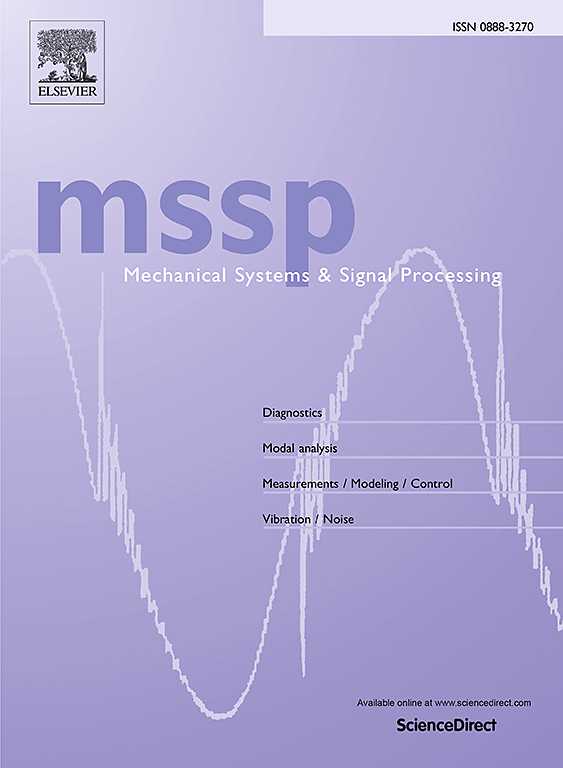Harmonic narrowband active noise control system with linear and nonlinear phase secondary path modeling for rotating machinery
IF 7.9
1区 工程技术
Q1 ENGINEERING, MECHANICAL
引用次数: 0
Abstract
In light of the harmonic characteristics often exhibited by narrowband noise from rotating machinery, this paper proposes a harmonic narrowband active noise control (HNANC) system to reduce the computational burden caused by filtering the secondary path modeling. The innovation lies in the method of secondary path estimation filtering: when the secondary path has linear phase characteristics, only the fundamental narrowband component is filtered, regardless of the total number of narrowband components present. Conversely, when the secondary path exhibits nonlinear phase characteristics, only a selective subset of the narrowband components undergoes the secondary path estimation filtering process. This approach notably curtails computational complexity, particularly in environments featuring multiple frequency noise components. Furthermore, an online local secondary estimation method only for a selective subset of the narrowband components is introduced in the HNANC framework, which further reduces the computational complexity of the NANC with online secondary modeling. To substantiate its effectiveness, the convergence and steady-state error of the conventional method, its optimized version, and HNANC using both offline and online, as well as linear and nonlinear phase secondary path modeling, are compared across various narrowband noise environments. Moreover, the proposed HNANC system, both with offline and online secondary modeling, undergoes testing on a duct ANC platform for exhaust fan noise. This practical validation helps underscore the potential real-world applicability of the HNANC system.
求助全文
约1分钟内获得全文
求助全文
来源期刊

Mechanical Systems and Signal Processing
工程技术-工程:机械
CiteScore
14.80
自引率
13.10%
发文量
1183
审稿时长
5.4 months
期刊介绍:
Journal Name: Mechanical Systems and Signal Processing (MSSP)
Interdisciplinary Focus:
Mechanical, Aerospace, and Civil Engineering
Purpose:Reporting scientific advancements of the highest quality
Arising from new techniques in sensing, instrumentation, signal processing, modelling, and control of dynamic systems
 求助内容:
求助内容: 应助结果提醒方式:
应助结果提醒方式:


